Story highlights
Gunmen separated men, women, called out names of cartoonists they wanted to kill
Popular French political cartoonists among those killed in magazine attack
Paris Deputy Mayor Patrick Klugman: "It's a very big and deep shock for all the press and for all the world"
With pen names Charb, Wolinski, Cabu, Tignous and Honore, they were famous for targeting all forms of authority with the world’s sharpest, no-holds-barred political cartoons.
But intolerance for that irreverence has cost some of France’s most respected and controversial cartoonists their lives. They were among the 12 people killed Wednesday during a lunchtime attack on the offices of a Paris-based satirical magazine that lampooned religious symbols of all faiths.
A moment of silence for the victims, who also included a popular columnist and a copy editor, was observed at noon Paris time.
Charlie Hebdo magazine editor Stephane “Charb” Charbonnier was killed when hooded attackers carrying assault rifles burst in and shouted “Allahu akbar,” Arabic for “God is great,” as they opened fire, according to Paris prosecutor Francois Molins. The attackers said they “avenged the Prophet.”
The dead included Georges Wolinski, who worked under the pen name Wolinski; Jean “Cabu” Cabut; Bernard “Tignous” Verlhac; and Philippe Honore, known as Honore. They ranked among the most popular and best-known members of a provocative staff whose cartoons of the Prophet Mohammed in recent years angered some Muslims.
Also killed was journalist, economist and Charlie Hebdo shareholder Bernard Maris.
Those killed were targeted for their artistic creations. The gunmen separated the men from the women and called out the names of cartoonists they intended to kill, said Dr. Gerald Kierzek, a physician who treated wounded patients and spoke with survivors.
Patrick Klugman, deputy mayor of Paris, said the victims included “the most famous cartoonists” in France in decades.
“It’s a very big and deep shock for all the press and for all the world,” he said. “It’s a major, major loss. Never a newspaper has been (targeted) by this violence.”
Throughout France and Europe, thousands rallied Wednesday evening, expressing solidarity with France and Charlie Hebdo and defiance to those behind the bloodshed.
At an event in Paris’ Place de la Republique, demonstrators raised pens in honor of the slain cartoonists and chanted, “We are Charlie!” Pictures posted online showed similar demonstrations in other cities, including Rome, Berlin and Barcelona.
Stephane ‘Charb’ Charbonnier
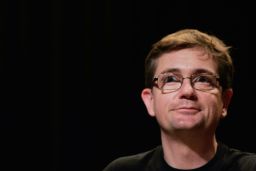
Charbonnier, like his magazine, was no stranger to controversy for lampooning a variety of subjects, including Christianity. But his staff’s acerbic take on Islam generated the most attention and vitriol and made him a target for extremists.
Charbonnier, 47, became editor of Charlie Hebdo in 2009, Britain’s Sky News reported.
Years later, he became a target of Islamic extremists. The al Qaeda magazine Inspire, in its March 2013 edition, ran a “Wanted: Dead or Alive” poster that included Charbonnier.
Charlie Hebdo’s latest cover featured a caricature of controversial French author Michel Houellebecq, who penned a novel set in a France governed by Muslims. The country has the largest Muslim population in Western Europe, with an estimated 4.7 million followers of the faith.
The cartoon shows Houellebecq saying, “In 2022, I will do Ramadan.”
Charlie Hebdo’s last tweet before Wednesday’s attack featured a cartoon of ISIS leader Abu Bakr al-Baghdadi and the words, “And, above all, health.”
“We do provocation; it’s been 20 years since we’ve been doing provocation, and it’s being noticed only when we talked about Islam or this part of Islam which raises problems and which is a minority,” Charbonnier told BFMTV in 2012.
“And when the government asks us not to do any provocation, we have the impression that three idiots who demonstrated in the streets represent all of Islam. It’s the government who insults Muslims by saying that. You have to take them as they are. One has to mock them using humor, disarm them with humor and not give them any credit. By taking them seriously and sending regiments of riot cops to hold them, one takes them seriously.”
Earlier cartoons of Mohammed – depictions that are deplored by Muslims – spurred protests and the burning of the magazine’s office three years ago.
In November 2011, the office caught fire the day Charlie Hebdo was due to publish a cover poking fun at Islamic law.
“It’s an indescribable mess,” Charbonnier told CNN at the time. “Everything has melted: the keyboards, the computers. Everything is dead. Ashes cover all of our belongings.”
A year later, in an interview with Le Monde newspaper, Charbonnier gave no indication there were any plans to change Charlie Hebdo.
“It may sound pompous,” he said, “but I’d rather die standing than live on my knees.”
His death, and those of others who worked with him, spurred a wave of support for the publication in France and around the world.
On social media, a trend emerged of people tweeting past covers from the magazine as well as the words “Je suis Charlie,” or “I am Charlie.”
In September 2012, as France was closing embassies in about 20 countries amid the global furor over the anti-Islam film “Innocence of Muslims,” the magazine published an issue featuring a cartoon that appeared to depict a naked Mohammed, along with a cover that appeared to show Mohammed being pushed in a wheelchair by an Orthodox Jew.
Charlie Hebdo journalist Laurent Leger defended the magazine at the time, saying the cartoons were not intended to provoke anger or violence.
“The aim is to laugh,” Leger told BFMTV in 2012. “We want to laugh at the extremists – every extremist. They can be Muslim, Jewish, Catholic. Everyone can be religious, but extremist thoughts and acts we cannot accept.”
“In France, we always have the right to write and draw. And if some people are not happy with this, they can sue us and we can defend ourselves. That’s democracy,” Leger said. “You don’t throw bombs, you discuss, you debate. But you don’t act violently. We have to stand and resist pressure from extremism.”
The weekly, which was founded in 1970, became renowned for its daring takedowns of politicians, public figures and religious symbols of all faiths.
After the slayings, Daniel Leconte, a filmmaker who was making a documentary about the cartoonists, told The New York Times that the cartoonists at Charlie Hebdo were “like columnists in a very important journal.”
Bernard ‘Tignous’ Verlhac

Ecuadorian cartoonist Xavier Bonilla, 50, said he got to know Verlhac during seminars with Cartooning for Peace, an international initiative created to promote tolerance through illustration.
“Tignous was great at humor and had an easy manner about himself,” said Bonilla. “He strongly believed in freedom of the press, something that becomes evident when you see his cartoons. He was a man who enjoyed freedom to its fullest in his artistic creativity and published his cartoons without fear.”
Verlhac, 58, was a contributor to the magazine, Sky News reported.
Bonilla recalled a reception he once attended with Verlhac at the French Embassy in Bogota, Colombia.
“He asked about 10 women to pose for him seated on a sofa,” he said. “Tignous took his time making a drawing of all of them posing. When he finally showed them the drawing, they were not very pleased because it was a cartoon that didn’t really make them look beautiful. He simply told them, ‘I drew them just like you look and that’s how I see you.’ Then he laughed out loud. This was the kind of dark humor that was also evident in his cartoons. He was great at that. He was a great artist.”
Leconte gave The New York Times some insight into Charbonnier’s upbringing. He was raised by communists, the filmmaker said, and grew up to be a left-wing activist. “He has this education, and this culture, which was one part of his personality,” Leconte told the newspaper, “but at the same time he was totally radical.”
Showing cartoons of the prophet had nothing to do with religious ideology; rather, Charbonnier was driven by “freedom, liberte,” the filmmaker said. “He was free man. He did not want to have obstructions in the way of thinking. He just wanted to express. Freedom of speech.”
Georges Wolinski
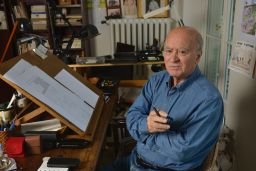
Mexican cartoonist Felipe Galindo said he was a friend of Wolinski, who once presented him with an award.
“He was a great satirical artist,” Galindo said. “Nothing was sacred for him. He would touch anything. But he was also a very gentle, very kind man.”
Wolinski, 80, was reportedly born in Tunisia to a French-Italian mother and a Jewish father from Poland.
He began his career as a political cartoonist in 1960, Britain’s Sky News reported.
Galindo said Wolinski – who was on the magazine’s editorial board – and the other satirists lived following “a French tradition of political cartooning about kings and Napoleon and everything. They followed that tradition to an extreme.”
Wolinski and the others were more concerned about possible retaliation against French citizens than themselves, Galindo said.
“They were very proud of their heritage and their country and freedom of expression,” he said. “They were scapegoats. But the pen is mightier than the sword, or guns in this case. This will enforce the idea of preserving our freedom of expression.”
Under the Instagram handle Wolinskikiki, a daughter of the cartoonist posted a photo her father’s drawing table with the caption, “Papa is gone, not Wolinski.”
Jean ‘Cabu’ Cabut
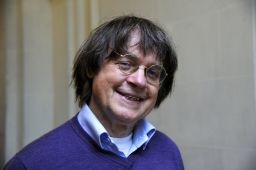
Cabut, 76, who contributed comic strips and caricatures to the magazine, had his first illustrations published in Paris newspapers in 1954, according to Sky News. He studied art studies at the École Estienne.
In 2006, he penned a controversial cartoon depicting Mohammed that appeared on the cover of Charlie Hebdo, Sky News reported.
London’s Daily Mail described him as “an almost legendary cultural figure in France.” As the magazine’s lead cartoonist, Cabut was reportedly the highest-paid cartoonist in the world, according to the Independent.
Philippe Honore
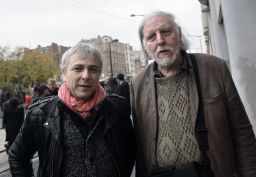
Honore, 73, illustrated the cartoon featured on the last tweet on Charlie Hebdo’s Twitter feed Wednesday morning. The cartoon is a drawing of al-Baghdadi, the ISIS leader, offering his best wishes for 2015.
“Best wishes by the way,” the tweet reads. “And health above all,” the terror leader is quoted as saying in the illustration signed by Honore.
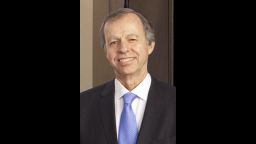
Bernard Maris
Maris also was a professor at the Institute of European Studies of the University of Paris VIII, Sky News reported. He also was a columnist and served as the magazine’s deputy editor, the International Business Times reported.
Ahmed Merabet
Merabet, a member of the 11th arrondissement police force who pursued the attackers, was shot dead as he lay injured on the pavement, according to French Interior Minister Bernard Cazeneuve. French media report that he was Muslim. Merabet was 40 years old, according to Cazeneuve.
Franck Brinsolaro
Brinsolaro, 49, was at the Charlie Hebdo offices as a protection officer for Charbonnier. The Daily Mail reports that he was the married father of two children.
Brinsolaro’s wife, Ingrid, is the editor in chief of L’Eveil Normand, a weekly news publication in the northwest of France, according to a report from the French radio station Tendance Ouest, the Los Angeles Times said.
He was a member of France’s Protection Service, which provides security for important people and institutions, the Los Angeles Times reported. Brinsolaro held the rank of brigadier, which is the same as a sergeant, the newspaper said.
A security guard, a copy editor, a former mayoral chief of staff and a beloved columnist
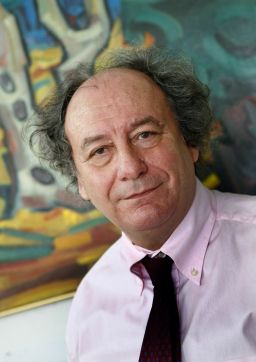
The other four victims are, as identified by Didier Guillaume, a member the French Senate:
Michel Renaud, Mustapha Ourrad, Elsa Cayat and Frederic Boisseau.
Boisseau was a security guard who had worked for 15 years in the building, The New York Times reported. He was on the first floor when the gunmen burst in, spraying the lobby with gunfire. Boisseau was killed as he sat at a welcome desk, according to an interview with Corrine Rey, a cartoonist at the magazine, the Times reported.
Cayat was the only woman killed, Le Monde reported. She was a psychoanalyst and twice-monthly columnist who wrote about a variety of subjects but focused on relationships, the newspaper said. Her column, translated in English as “The Couch,” was popular among many.
Ourrad, born in Algeria, was a copy editor for Charlie Hebdo. He moved to France 20 years ago and worked for several other publication before joining the magazine, Le Monde reported.
Renaud, the former chief of staff for the mayor of Clermont-Ferrand, was only visiting Charlie Hebdo on Wednesday because he was returning some drawings that cartoonist Cabut had lent to him for a travel book about Clermont-Ferrand, Le Monde said. Renaud was invited to attend the staff editorial meeting where much of the bloodshed occurred.
CNN’s Alanne Orjoux, Rafael Romo and Lorenzo Ferrigno contributed to this report.



















